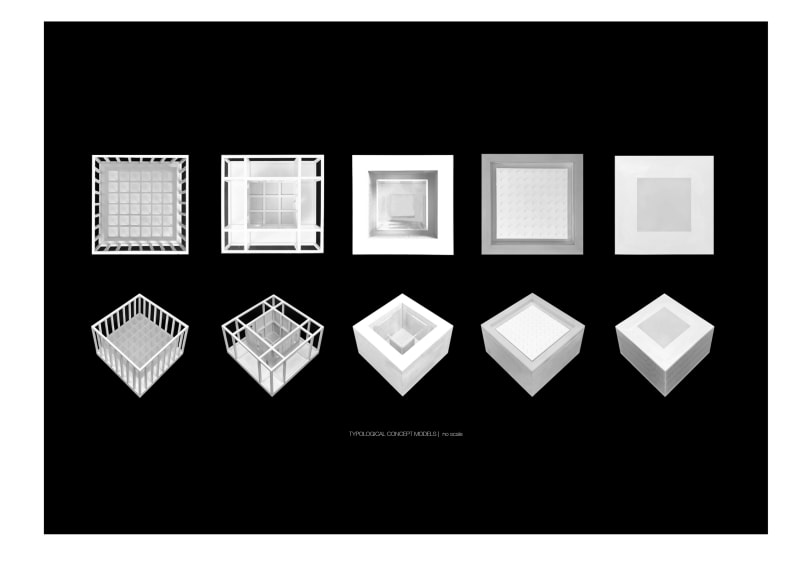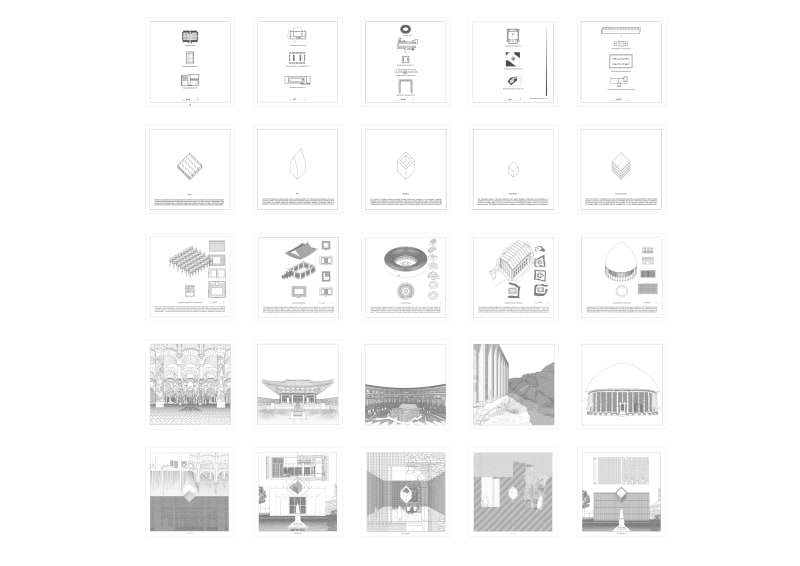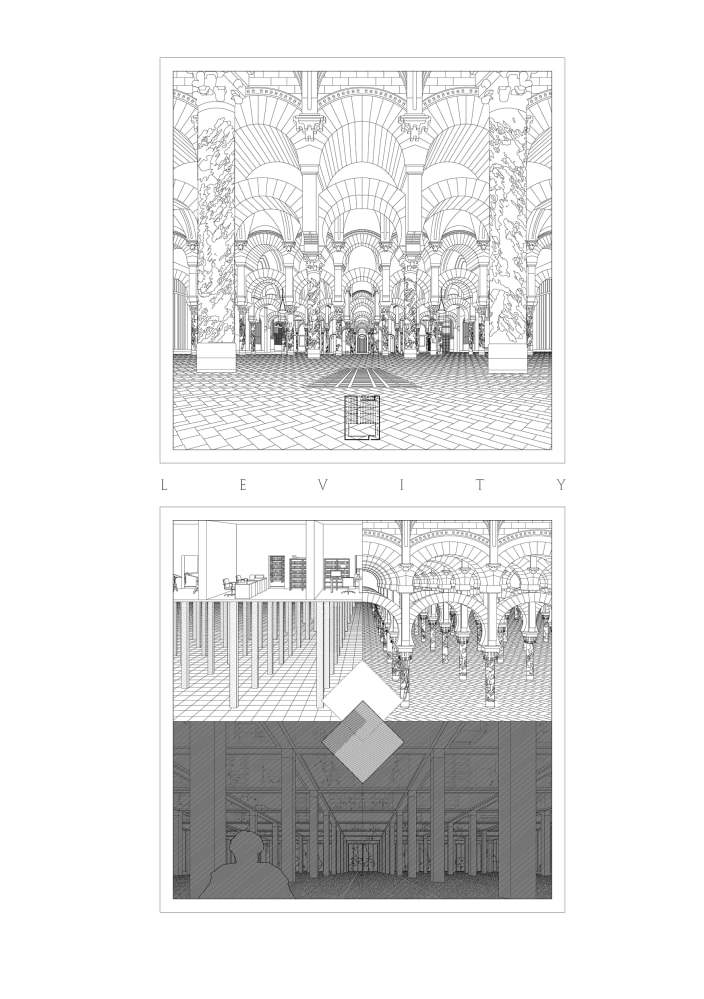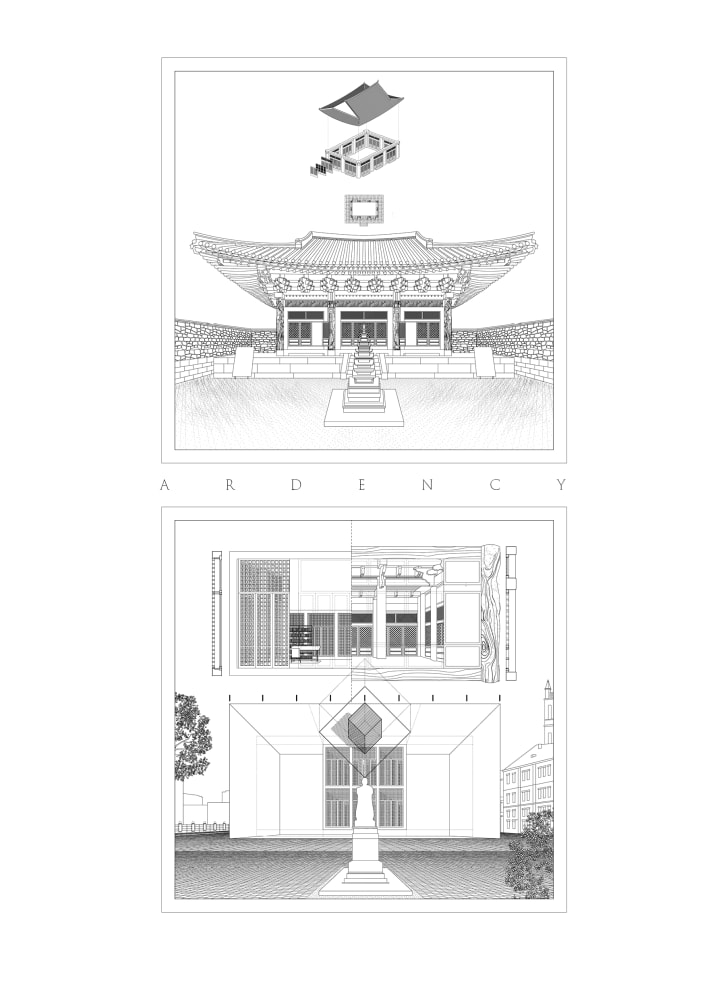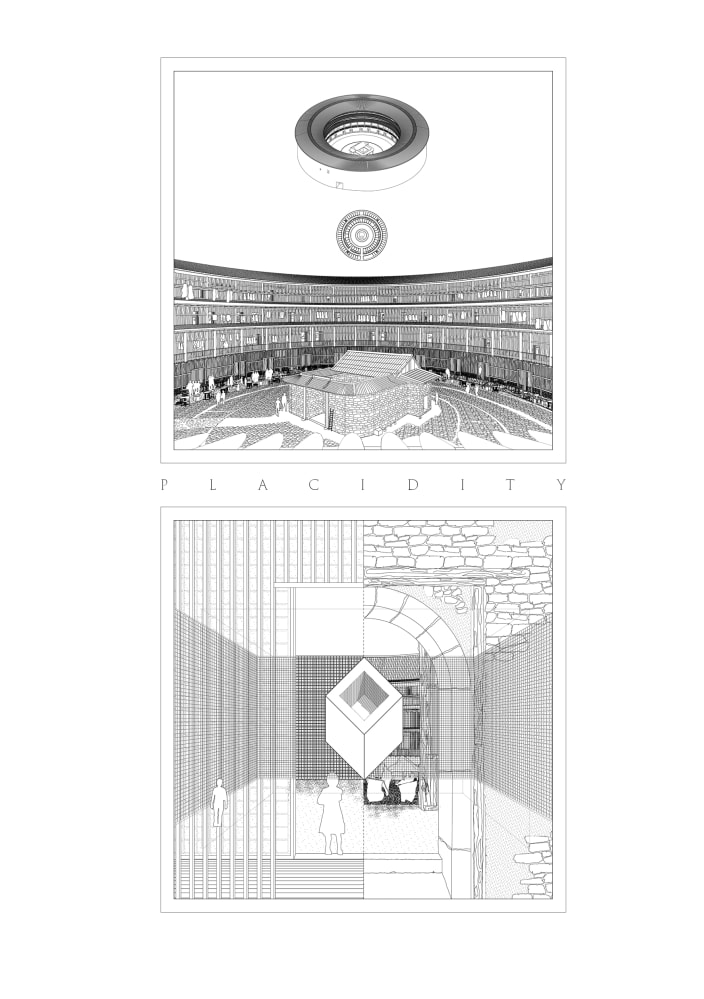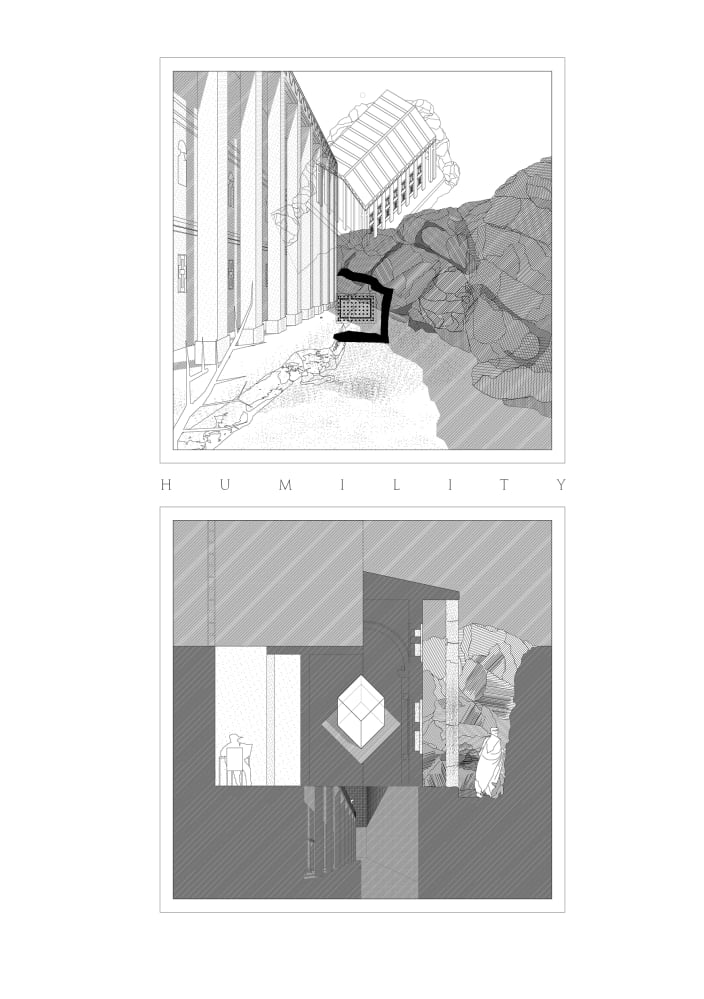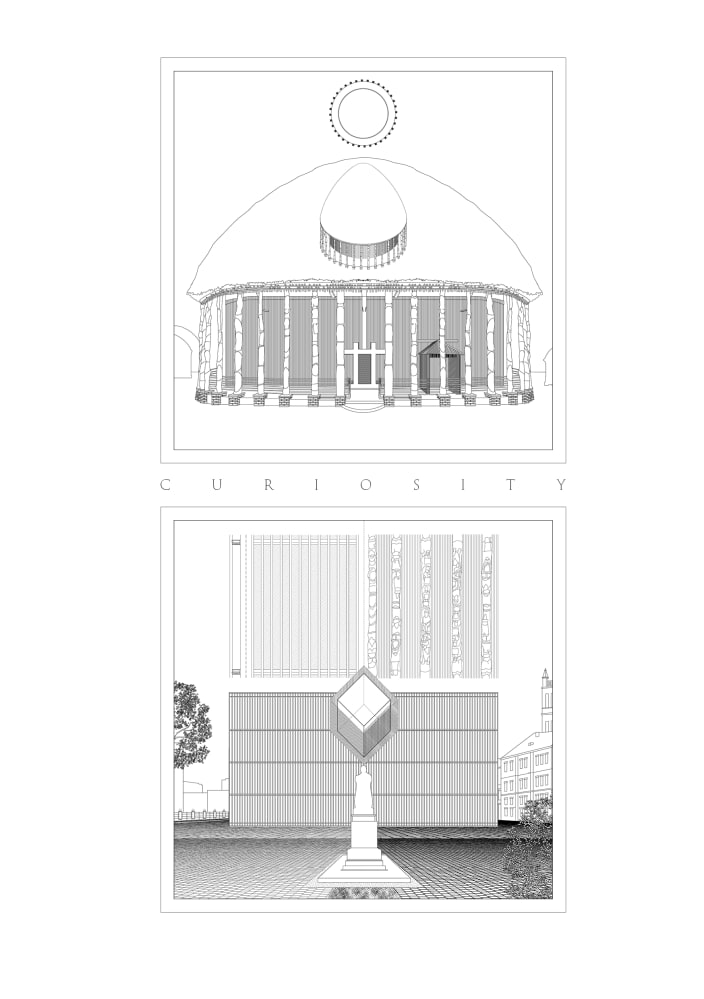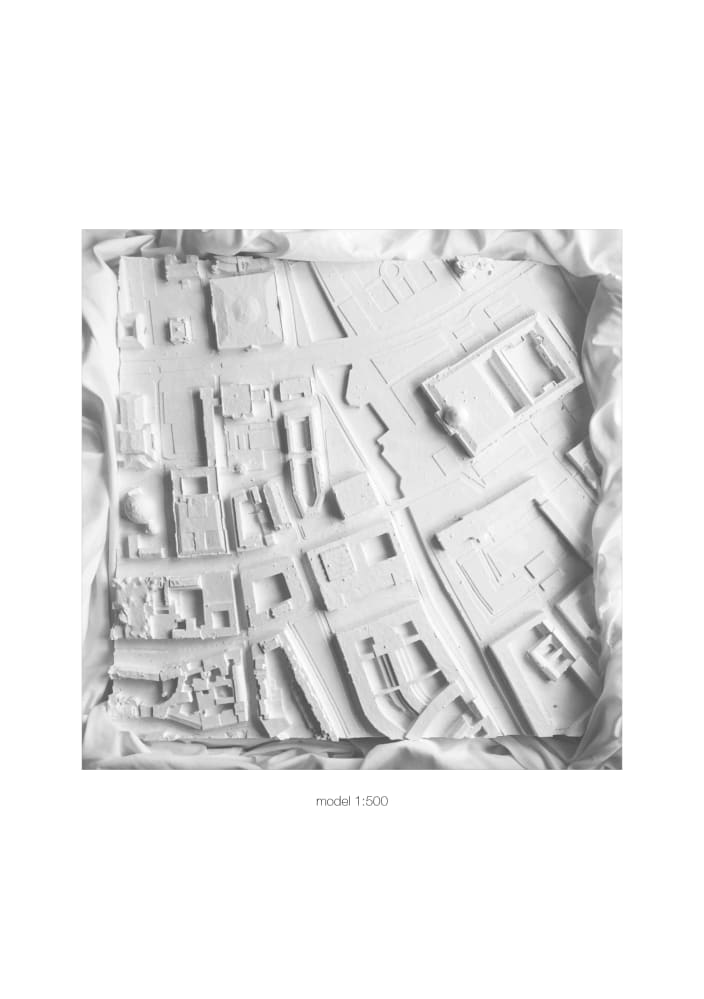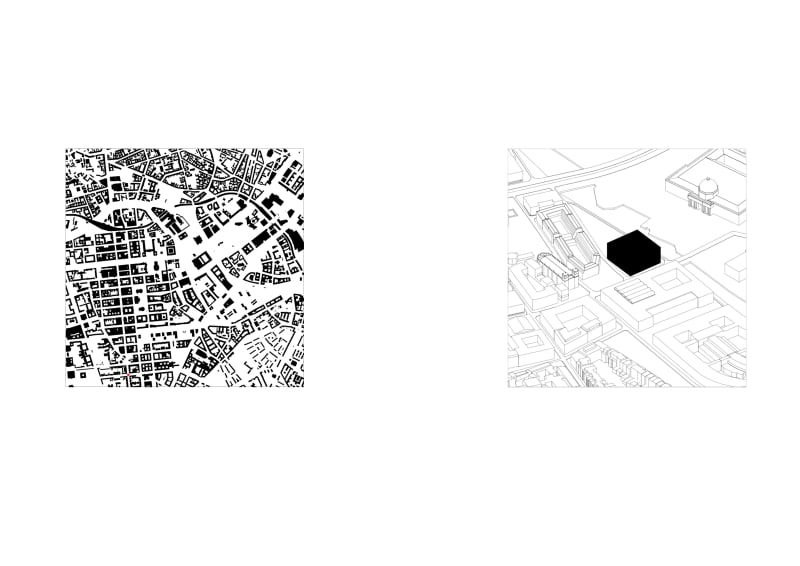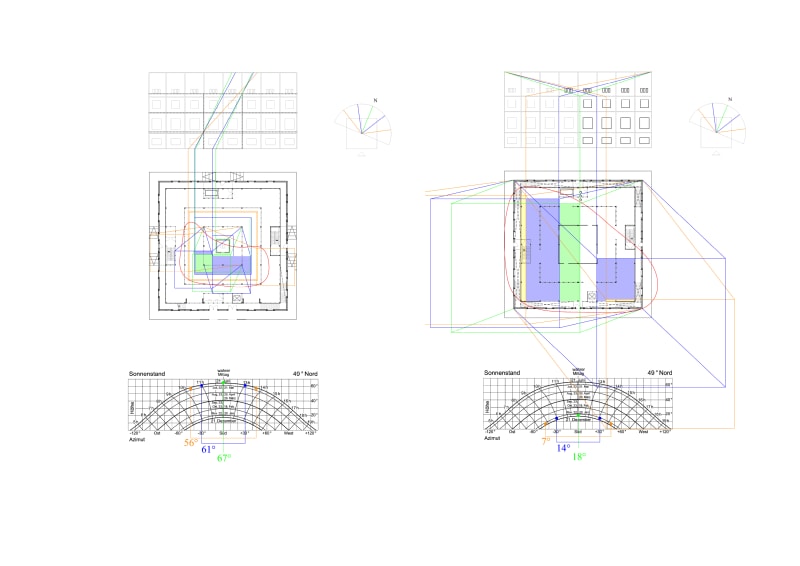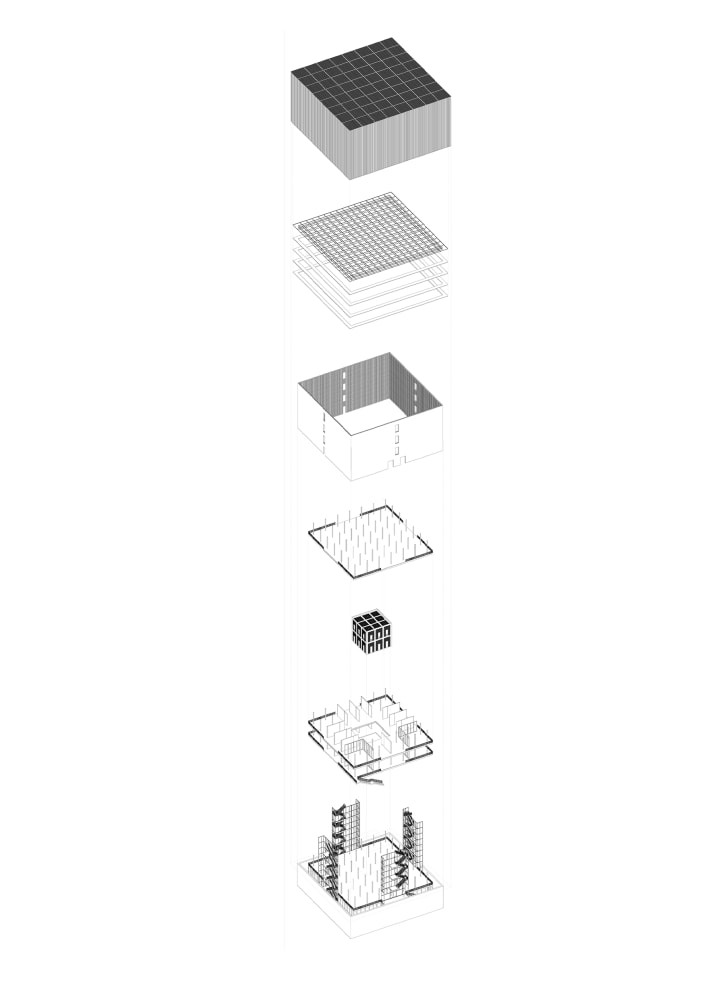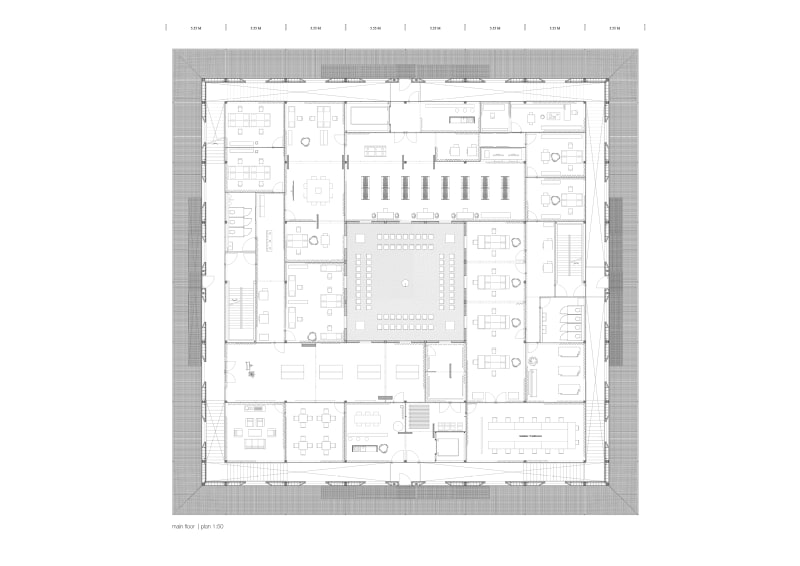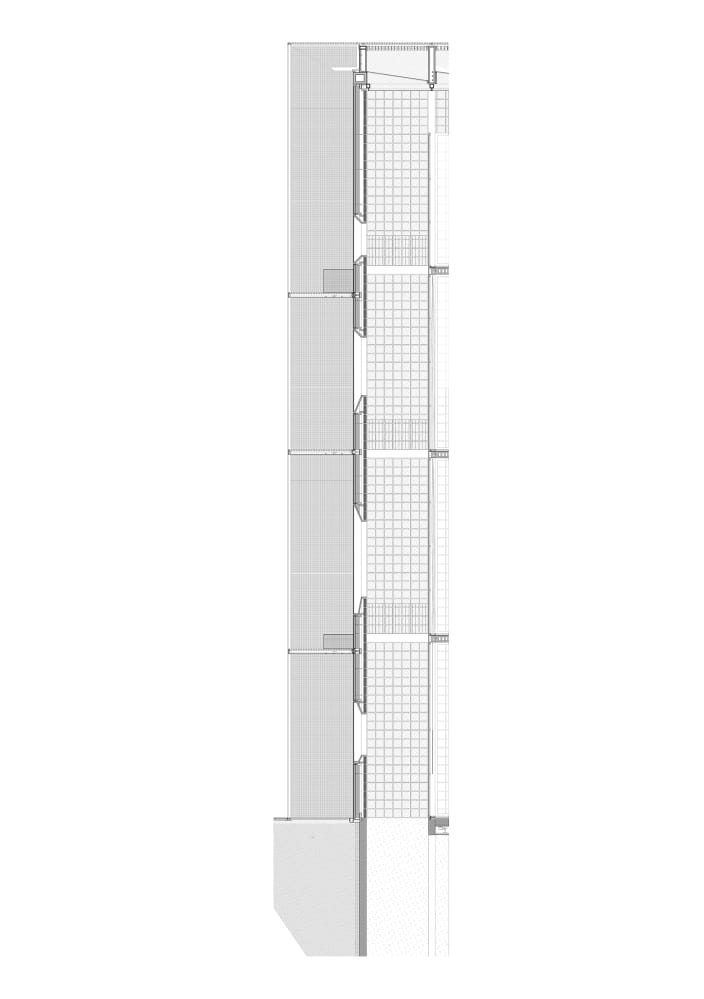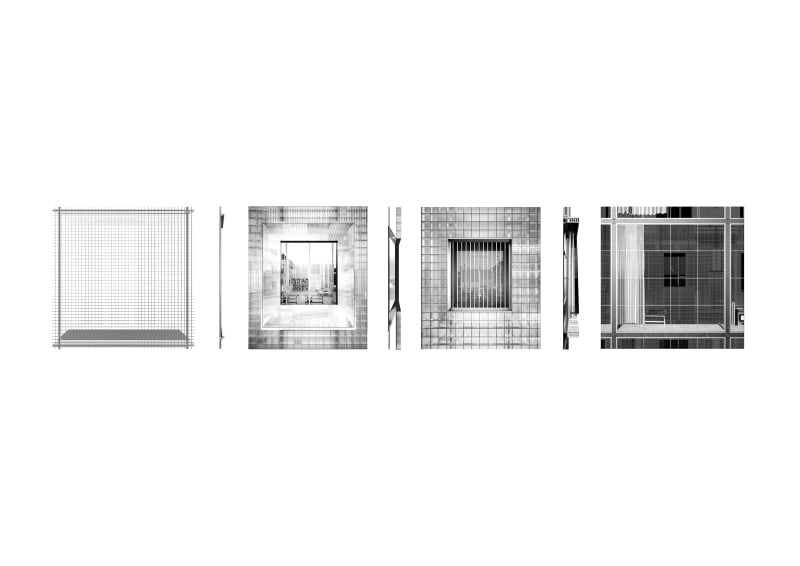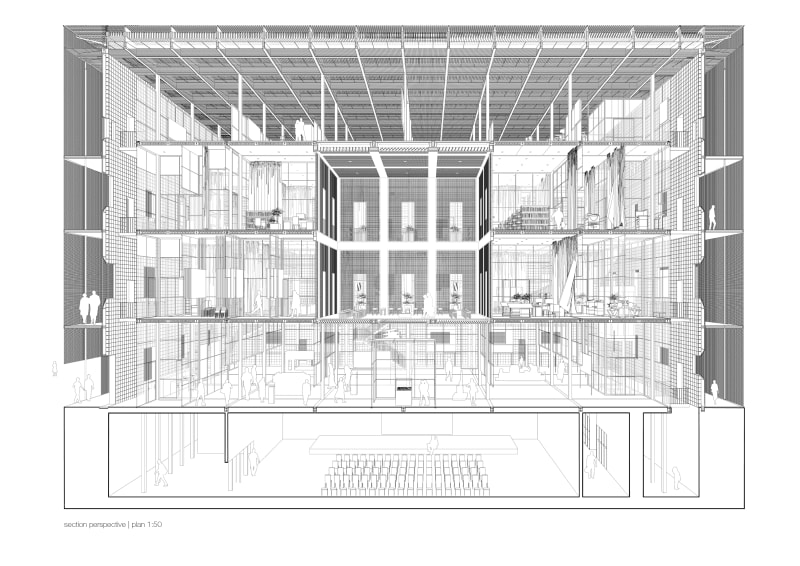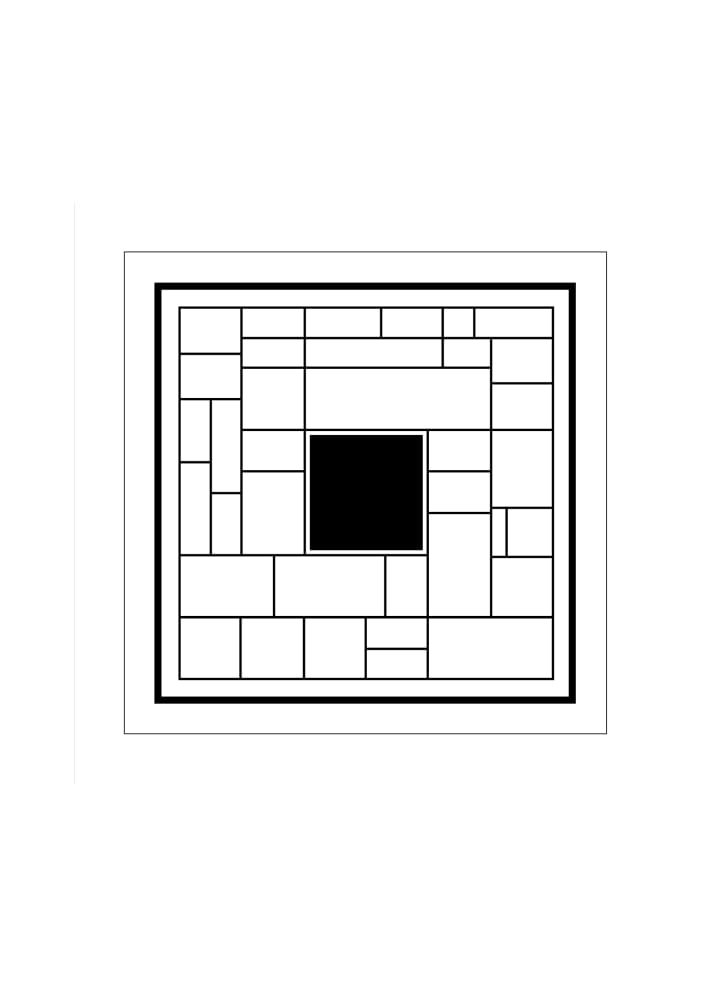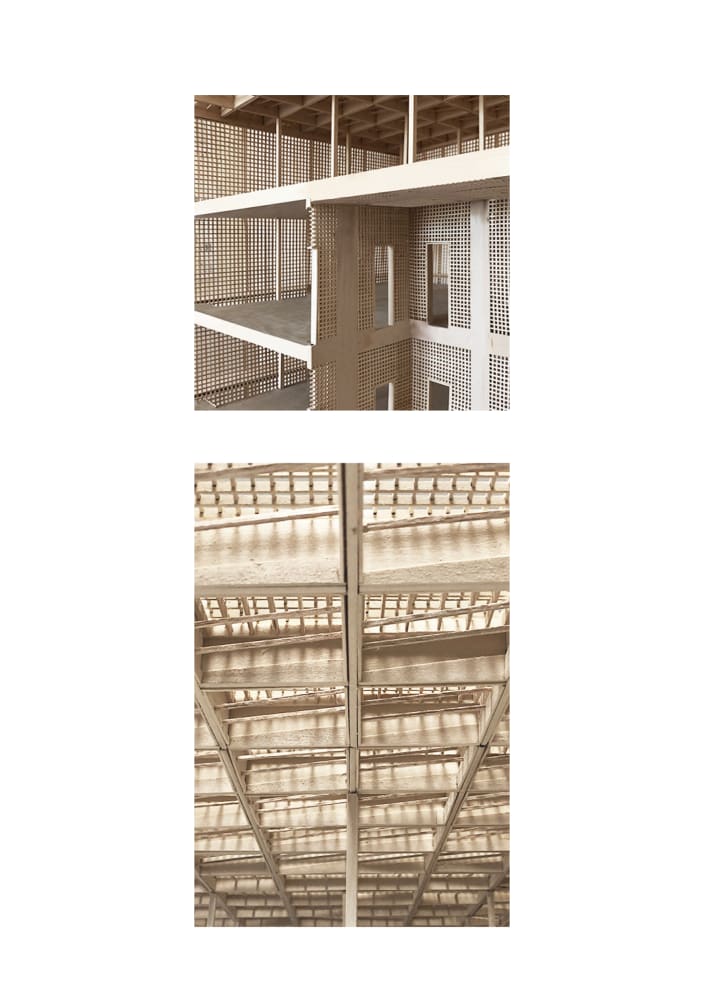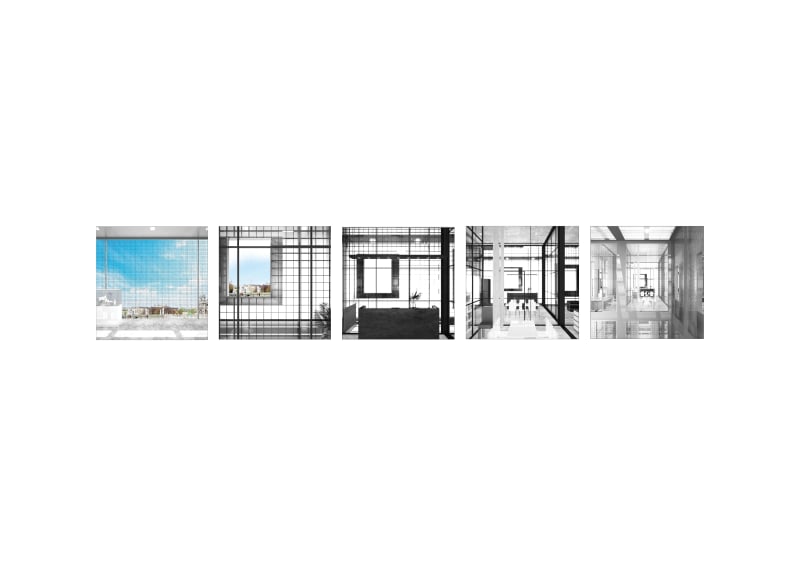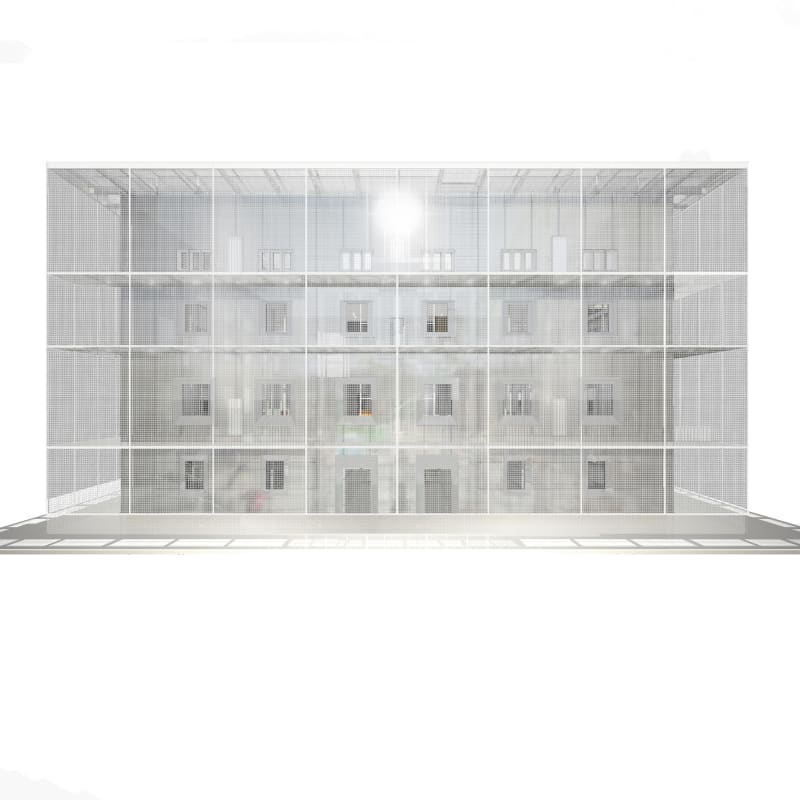An architectural motif is situated between a model of systemic iteration – as in J.N.L. Durand’s notion of typology as a projective series of schematic variations – and Quatremère de Quincy’s concept of a type which deductively construes an indefinite ideal deprived of any formal parameters.
The architectural motif is a combination and materializes indefinite, sensual impressions in a definite, graspable form. Five motifs of archaic buildings from different cultural pedigrees [Mosque of Córdoba | Naksansa Temple | Fujian Tulou | Medhane Church | Bandjoun Hut] evoking humane sentient dispositions [Levity | Ardency | Placidity | Humility | Curiosity] are portrayed anew in a contemporary design. Reinterpreting these dissimilar cultural constructions entails a conscientious turn to universal cross-cultural common grounds of intuition.
Contemporary architecture is over-saturated by an unprecedented abundance of styles that are not rooted in historic continuity. As an antidote, “five motifs” searches for enrichment in the roots and follows a subjectified access, inducing intuitive ordinary images. In the sense of the introduced hybridized methodology, those projected images rather than deductive extractions, coopt the operation which a type appeals as an ideal and redetermine a constructive solution for that it is informed by human sentient experiences.
The motif, engendering an archaic mood, produces a narrative facet instilled in the constructive and causes an enhancement of the integral essence of a type. By this, the resulting space constantly approaches their ideological essence by the act of purification, due to the ongoing advancement of technological opportunities. Coeval precedings about the reestablishment of the former Bauakademie by Karl F. Schinkel in Berlin frame this thesis, which embodies an alternative to the planned, nostalgic verbatim reconstruction recently issued by the German Parliament.

